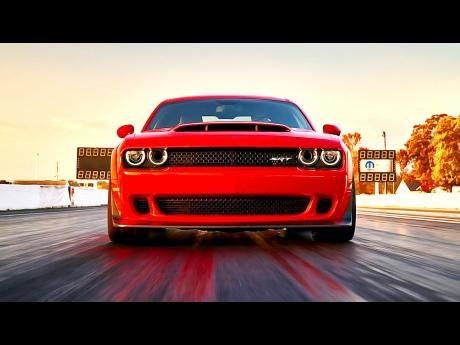Better headlights needed, says NTSB
New cars and trucks need substantial improvements, including better headlights, to protect pedestrians following a spike in deaths on US roads, federal safety oversight officials said earlier this month.
The National Transportation Safety Board (NTSB) said the US needs to update outdated regulations to allow for high-tech headlights and should include pedestrian safety on its new-car safety-rating system.
From 2007 to 2016, the number of people killed in crashes fell 14 per cent but the number of pedestrians killed rose 27 per cent, according to the NTSB. The increase was even more dramatic from 2009 to 2016, when pedestrian deaths rose 46 per cent to nearly 6,000.
The NTSB did not appear to draw firm conclusions on what has caused the spike in pedestrian deaths, instead focusing largely on recommendations for vehicle, regulatory and infrastructure improvements.
"We've got to end this tragic problem on our nation's roadways," NTSB chairman Robert Sumwalt said recently during a session to consider the agency staff's recommendations.
Federal rules have blocked adaptive beam headlamps that automatically adjust to oncoming traffic to reduce glare and help drivers see better. Those lights are legal and commonplace in Europe.
"This is a very old standard and it really doesn't allow manufacturers to design headlights that are optimised to help reduce glare and boost visibility," NTSB project manager Deb Bruce said.
Research by the Insurance Institute for Highway Safety and Consumer Reports have exposed the poor performance of many headlights on the road today, often affecting even luxury vehicles. In addition to regulatory blockades, automotive designers have sometimes created headlight shapes that aren't ideal for illumination, while factories often don't install headlights for optimal performance.
Wade Newton, spokesman for the Alliance of Automobile Manufacturers which represents auto companies on policy issues, said the group has "long supported" adaptive beam headlights.
"The technology's been supported by virtually the entire industry here in the United States, including the Alliance and other trade associations," Newton said in an email.
The NTSB also concluded that vehicles need improved safety technology, such as pedestrian collision avoidance systems and safer hoods, to give pedestrians a better chance of surviving accidents.
The NTSB's findings and recommendations are not binding but typically carry significant advisory implications. The investigators studied a representative sample of 15 pedestrian crashes from 2016.
Vehicle improvements, updated regulations, infrastructure upgrades and improved data collection would "substantially reduce" pedestrian deaths, NTSB's Robert Molloy said.
A USA TODAY Network/Detroit Free Press investigation this summer found that the SUV sales boom in America has been a key contributor to the spike in deaths - because research shows people are much more likely to die when hit by an SUV than when hit by a passenger car.
Experts also believe that distracted driving is likely contributing.
Bruce agreed that distraction is likely a factor but said not enough research has been conducted to reach firm conclusions.
The agency said that in general, the pedestrian safety crisis is difficult to study, in part because it can be hard to ascertain the cause of a crash since the victim cannot be interviewed.
But there are many other factors that contribute to collisions, such as dark streets, poorly designed roads, alcohol use, drug use, urbanisation and jaywalking.
The Governors Highway Safety Administration (GHSA) applauded the NTSB's recommendations, saying a multi-pronged approach to tackling pedestrian safety is necessary, including local government infrastructure upgrades.
"GHSA believes there is no single, universal solution to this issue," the group said in a statement. "States and localities should reserve the right to examine and evaluate the pedestrian safety problems their communities face and implement the solutions that best fit their needs. As the NTSB noted, improved pedestrian fatality data collection and access are critical to enabling communities to perform these careful analyses."
One possible way to improve pedestrian safety would be to alter the federal auto-safety rating system to incorporate a score for pedestrian safety, which might incentivise automakers to make voluntary upgrades.
The National Highway Traffic Safety Administration proposed in 2015 to do this with the New Car Assessment Program by 2018.
But that proposal has stalled amid a tepid reception from some automakers, the USA TODAY Network/Detroit Free Press investigation found.
The NTSB said the safety-rating score should indeed include pedestrian safety performance.
"The question here is, why hasn't it been done?" NTSB member T. Bella Dinh-Zarr asked during a recent session.
- Contributed


